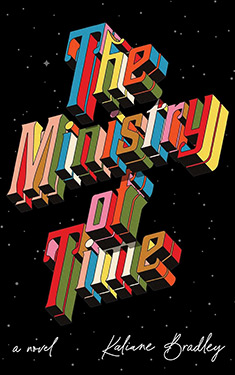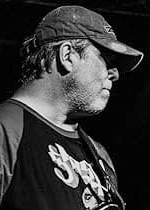
Added By: Administrator
Last Updated: Administrator
Foucault's Pendulum
| Author: | Umberto Eco |
| Publisher: |
Harcourt Brace Jovanovich, 1989 Original Italian publication, 1988 |
| Series: | |
|
This book does not appear to be part of a series. If this is incorrect, and you know the name of the series to which it belongs, please let us know. |
|
| Book Type: | Novel |
| Genre: | Fantasy |
| Sub-Genre Tags: | Historical Fantasy Alternate History (Fantasy) Contemporary Fantasy |
| Awards: | |
| Lists: | |
| Links: |
|
| Avg Member Rating: |
|
|
|
|
Synopsis
Bored with their work, three Milanese editors cook up "the Plan," a hoax that connects the medieval Knights Templar with other occult groups from ancient to modern times. This produces a map indicating the geographical point from which all the powers of the earth can be controlled-a point located in Paris, France, at Foucault's Pendulum. But in a fateful turn the joke becomes all too real, and when occult groups, including Satanists, get wind of the Plan, they go so far as to kill one of the editors in their quest to gain control of the earth.
Orchestrating these and other diverse characters into his multilayered semiotic adventure, Eco has created a superb cerebral entertainment.
Excerpt
1
HEBREW HANDWRITING ART
That was when I saw the Pendulum.
The sphere, hanging from a long wire set into the ceiling of the choir, swayed back and forth with isochronal majesty.
I knew--but anyone could have sensed it in the magic of that serene breathing--that the period was governed by the square root of the length of the wire and by p, that number which, however irrational to sublunar minds, through a higher rationality binds the circumference and diameter of all possible circles. The time it took the sphere to swing from end to end was determined by an arcane conspiracy between the most timeless of measures: the singularity of the point of suspension, the duality of the plane's dimensions, the triadic beginning of p, the secret quadratic nature of the root, and the unnumbered perfection of the circle itself.
I also knew that a magnetic device centered in the floor beneath issued its command to a cylinder hidden in the heart of the sphere, thus assuring continual motion. This device, far from interfering with the law of the Pendulum, in fact permitted its manifestation, for in a vacuum any object hanging from a weightless and unstretchable wire free of air resistance and friction will oscillate for eternity.
The copper sphere gave off pale, shifting glints as it was struck by the last rays of the sun that came through the great stained-glass windows. Were its tip to graze, as it had in the past, a layer of damp sand spread on the floor of the choir, each swing would make a light furrow, and the furrows, changing direction imperceptibly, would widen to form a breach, a groove with radial symmetry--like the outline of a mandala or pentaculum, a star, a mystic rose. No, more a tale recorded on an expanse of desert, in tracks left by countless caravans of nomads, a story of slow, millennial migrations, like those of the people of Atlantis when they left the continent of Mu and roamed, stubbornly, compactly, from Tasmania to Greenland, from Capricorn to Cancer, from Prince Edward Island to the Svalbards. The tip retraced, narrated anew in compressed time what they had done between one ice age and another, and perhaps were doing still, those couriers of the Masters. Perhaps the tip grazed Agarttha, the center of the world, as it journeyed from Samoa to Novaya Zemlya. And I sensed that a single pattern united Avalon, beyond the north wind, to the southern desert where lies the enigma of Ayers Rock.
At that moment of four in the afternoon of June 23, the Pendulum was slowing at one end of its swing, then falling back lazily toward the center, regaining speed along the way, slashing confidently through the hidden parallelogram of forces that were its destiny.
Had I remained there despite the passage of the hours, to stare at that bird's head, that spear's tip, that obverse helmet, as it traced its diagonals in the void, grazing the opposing points of its astigmatic circumference, I would have fallen victim to an illusion: that the Pendulum's plane of oscillation had gone full circle, had returned to its starting point in thirty-two hours, describing an ellipse that rotated around its center at a speed proportional to the sine of its latitude. What would its rotation have been had it hung instead from the dome of Solomon's Temple? Perhaps the Knights had tried it there, too. Perhaps the solution, the final meaning, would have been no different. Perhaps the abbey church of Saint-Martin-des-Champs was the true Temple. In any case, the experiment would work perfectly only at the Pole, the one place where the Pendulum, on the earth's extended axis, would complete its cycle in twenty-four hours.
But this deviation from the Law, which the Law took into account, this violation of the rule did not make the marvel any less marvelous. I knew the earth was rotating, and I with it, and Saint-Martin-des-Champs and all Paris with me, and that together we were rotating beneath the Pendulum, whose own plane never changed direction, because up there, along the infinite extrapolation of its wire beyond the choir ceiling, up toward the most distant galaxies, lay the Only Fixed Point in the universe, eternally unmoving.
So it was not so much the earth to which I addressed my gaze but the heavens, where the mystery of absolute immobility was celebrated. The Pendulum told me that, as everything moved--earth, solar system, nebulae and black holes, all the children of the great cosmic expansion--one single point stood still: a pivot, bolt, or hook around which the universe could move. And I was now taking part in that supreme experience. I, too, moved with the all, but I could see the One, the Rock, the Guarantee, the luminous mist that is not body, that has no shape, weight, quantity, or quality, that does not see or hear, that cannot be sensed, that is in no place, in no time, and is not soul, intelligence, imagination, opinion, number, order, or measure. Neither darkness nor light, neither error nor truth.
I was roused by a listless exchange between a boy who wore glasses and a girl who unfortunately did not.
"It's Foucault's Pendulum," he was saying. "First tried out in a cellar in 1851, then shown at the Observatoire, and later under the dome of the Panthéon with a wire sixty-seven meters long and a sphere weighing twenty-eight kilos. Since 1855 it's been here, in a smaller version, hanging from that hole in the middle of the rib."
"What does it do? Just hang there?"
"It proves the rotation of the earth. Since the point of suspension doesn't move..."
"Why doesn't it move?"
"Well, because a point... the central point, I mean, the one right in the middle of all the points you see... it's a geometric point; you can't see it because it has no dimension, and if something has no dimension, it can't move, not right or left, not up or down. So it doesn't rotate with the earth. You understand? It can't even rotate around itself. There is no 'itself.'"
"But the earth turns."
"The earth turns, but the point doesn't. That's how it is. Just take my word for it."
"I guess it's the Pendulum's business."
Idiot. Above her head was the only stable place in the cosmos, the only refuge from the damnation of the panta rei, and she guessed it was the Pendulum's business, not hers. A moment later the couple went off--he, trained on some textbook that had blunted his capacity for wonder, she, inert and insensitive to the thrill of the infinite, both oblivious of the awesomeness of their encounter--their first and last encounter--with the One, the Ein-Sof, the Ineffable. How could you fail to kneel down before this altar of certitude?
I watched with reverence and fear. In that instant I was convinced that Jacopo Belbo was right. What he told me about the Pendulum I had attributed to esthetic raving, to the shapeless cancer taking gradual shape in his soul, transforming the game into reality without his realizing it. But if he was right about the Pendulum, perhaps all the rest was true as well: the Plan, the Universal Plot. And in that case I had been right to come here, on the eve of the summer solstice. Jacopo Belbo was not crazy; he had simply, through his game, hit upon the truth.
But the fact is that it doesn't take long for the experience of the Numinous to unhinge the mind.
I tried then to shift my gaze. I followed the curve that rose from the capitals of the semicircle of columns and ran along the ribs of the vault toward the key, mirroring the mystery of the ogive, that supreme static hypocrisy which rests on an absence, making the columns believe that they are thrusting the great ribs upward and the ribs believe that they are holding the columns down, the vault being both all and nothing, at once cause and effect. But I realized that to neglect the Pendulum that hung from the vault while admiring the vault itself was like becoming drunk at the stream instead of drinking at the source.
The choir of Saint-Martin-des-Champs existed only so that, by virtue of the Law, the Pendulum could exist; and the Pendulum existed so that the choir could exist. You cannot escape one infinite, I told myself, by fleeing to another; you cannot escape the revelation of the identical by taking refuge in the illusion of the multiple.
Still unable to take my eyes from the key of the vault, I retreated, step by step, for I had learned the path by heart in the few minutes I had been there. Great metal tortoises filed past me on either side, imposing enough to signal their presence at the corner of my eyes. I fell back along the nave toward the front entrance, and again those menacing prehistoric birds of wire and rotting canvas loomed over me, evil dragonflies that some secret power had hung from the ceiling of the nave. I saw them as sapiential metaphors, far more meaningful than their didactic pretext. A swarm of Jurassic insects and reptiles, allegory of the long terrestrial migrations the Pendulum was tracing, aimed at me like angry archons with their long archeopterix-beaks: the planes of Bréguet, Blériot, Esnault, and the helicopter of Dufaux.
Copyright © 1988 by Umberto Eco
Reviews
Images
No alternate cover images currently exist for this novel.



















 Full Details
Full Details





